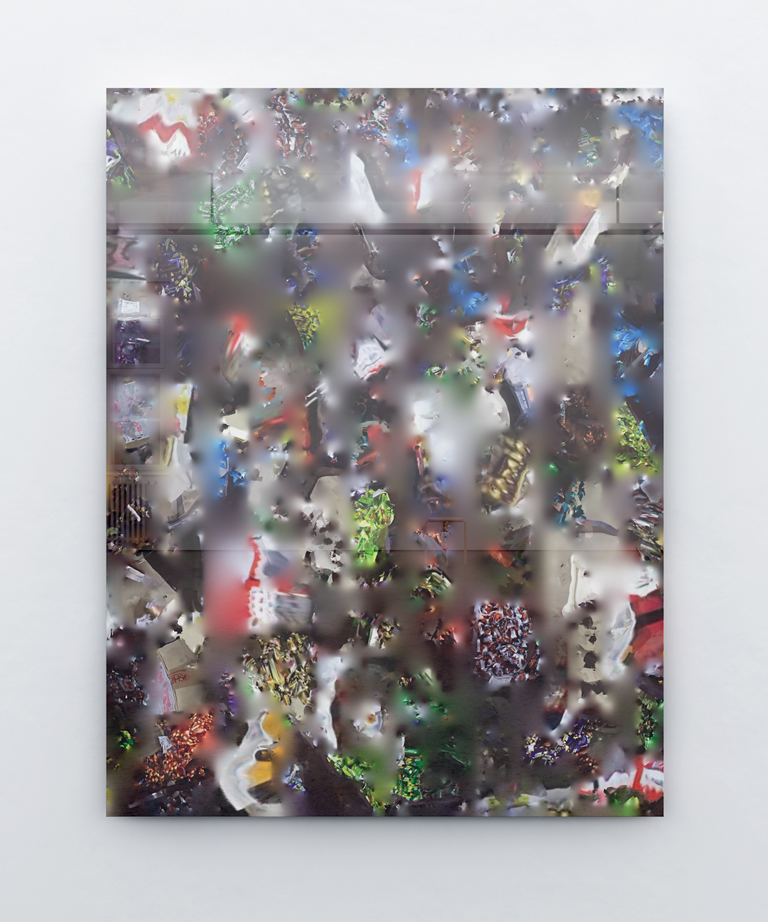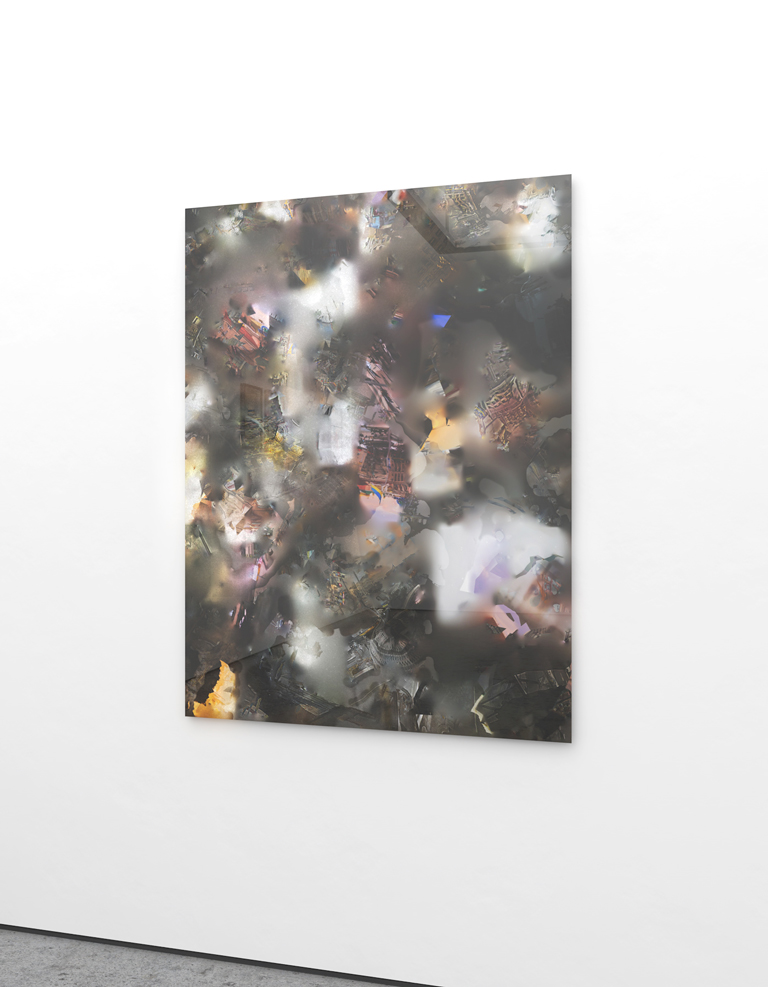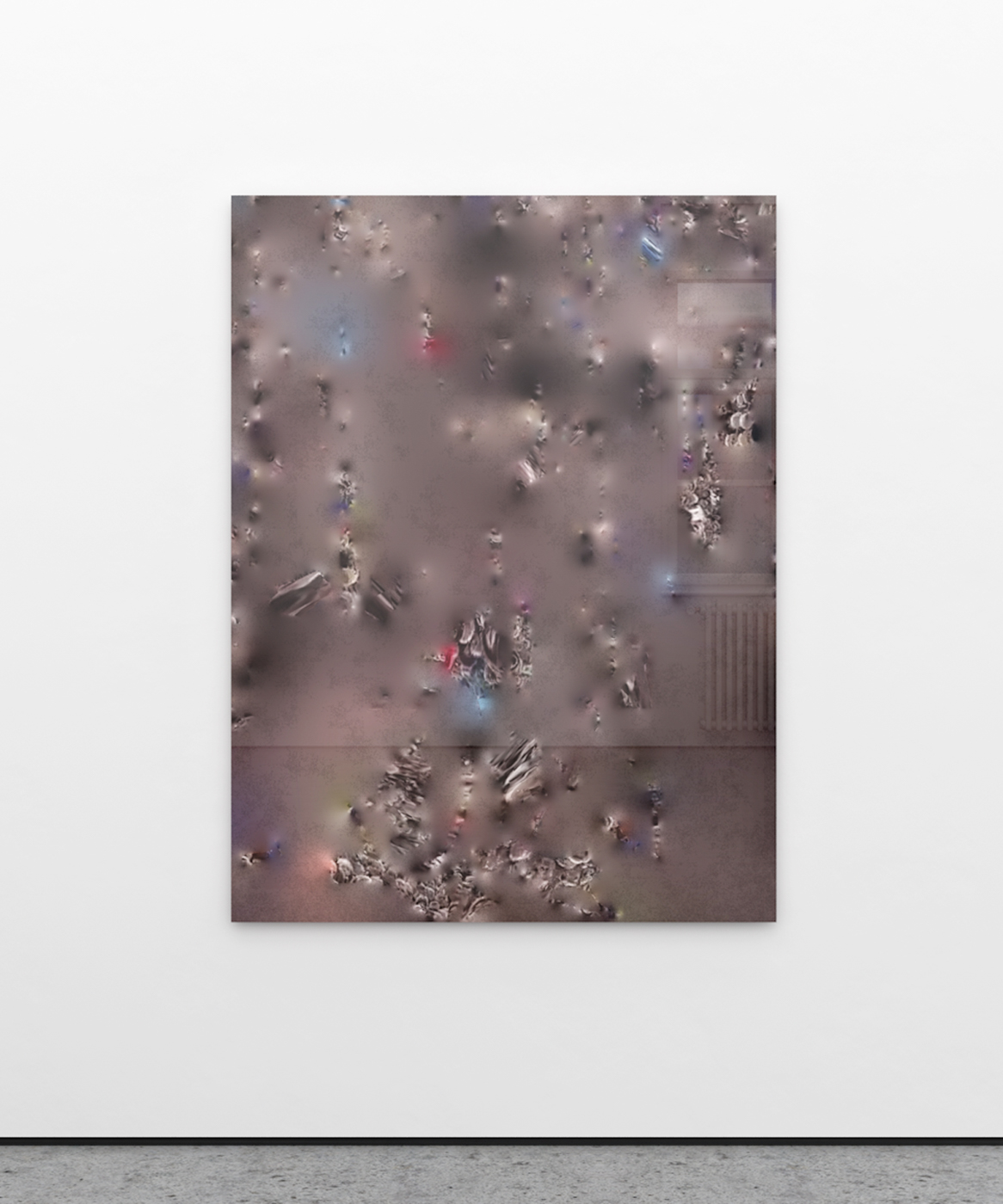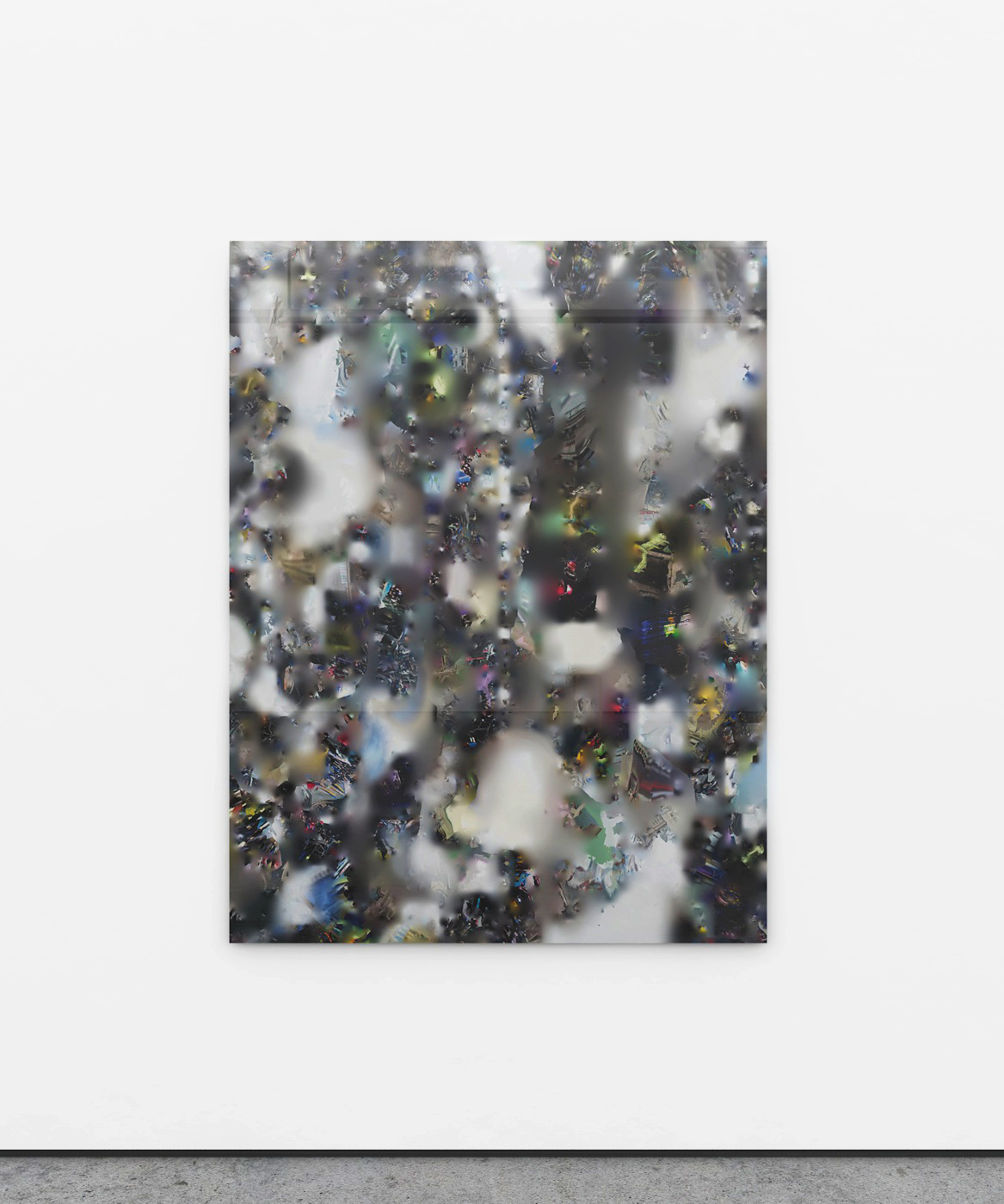Maidan, 2015
Maidan, 2015, Series of 4 Large format Pigment Prints, 98,4 cm x 128,6 cm each.

Poroshenkos bonbons, Private iPhone pics from Kiev, pics shot on 16th Dec 2015 22:47 -3th Jan 21:25, From the Maidan series, 98,4 x 128,6 cm, UV-cured ink-jet on acrylic glass

Untitled, (Flickr - Kiev - image search from 2th Dec 2015 14:25, 108 Images, From the Maidan series), 98,4 x 128,6 cm, UV-cured ink-jet on acrylic glass

Untitled, YouTube - Kiev - image search from 27th Nov 2015 21:46, From the Maidan series, 98,4 x 128,6 cm, UV-cured inkjet on acrylic glass

Untitled, From the Maidan series, Google image search (27th Nov 2015 21:46, 750 Images) 2016, UV-cured ink-jet on acrylic glass, 98,4 cm x 128,6 cm.
In 2013, the Maidan Square in Kyiv became the stage for a profound drama, attracting a multitude of photographers and journalists. Each provided a unique perspective on the unfolding narrative. This scenario opened an intensified engagement with the complex relationship between photography, propaganda, and the digital era. It became clear that an internet search for "Maidan Square" yielded a broad spectrum of images from authentic documentation to manipulated visual narratives. These images raised critical questions regarding the authenticity of photographs, especially in the context of political propaganda.
The creative approach to addressing these concerns integrated 3D scans, Google Street View data, and immersive 360-degree captures of Maidan, culminating in a three-dimensional reconstruction of the site. This reconstruction allowed for the integration of additional 3D elements based on precise GPS metadata, effectively demonstrating both the capabilities and limitations of digital image manipulation techniques.
In an era marked by the widespread dissemination of images and data, the indispensable role of photography as a historical document and as a catalyst for shaping public opinion was highlighted. The artist, originating from Moldova, found the events of the Euromaidan process in Kyiv profoundly fascinating as they illuminated the duality of human yearning for change and the divisive nature of propaganda and digital image manipulation in times of conflict. An artistic immersion into the interactions between visual representation and political reality unfolded, exploring the transformative power of art in a digitally permeated age.
Maidan, 2015
Maidan, 2015, Series of 4 Large format Pigment Prints, 98,4 cm x 128,6 cm each.

Poroshenkos bonbons, Private iPhone pics from Kiev, pics shot on 16th Dec 2015 22:47 -3th Jan 21:25, From the Maidan series, 98,4 x 128,6 cm, UV-cured ink-jet on acrylic glass

Untitled, (Flickr - Kiev - image search from 2th Dec 2015 14:25, 108 Images, From the Maidan series), 98,4 x 128,6 cm, UV-cured ink-jet on acrylic glass

Untitled, YouTube - Kiev - image search from 27th Nov 2015 21:46, From the Maidan series, 98,4 x 128,6 cm, UV-cured inkjet on acrylic glass

Untitled, From the Maidan series, Google image search (27th Nov 2015 21:46, 750 Images) 2016, UV-cured ink-jet on acrylic glass, 98,4 cm x 128,6 cm.
In 2013, the Maidan Square in Kyiv became the stage for a profound drama, attracting a multitude of photographers and journalists. Each provided a unique perspective on the unfolding narrative. This scenario opened an intensified engagement with the complex relationship between photography, propaganda, and the digital era. It became clear that an internet search for "Maidan Square" yielded a broad spectrum of images from authentic documentation to manipulated visual narratives. These images raised critical questions regarding the authenticity of photographs, especially in the context of political propaganda.
The creative approach to addressing these concerns integrated 3D scans, Google Street View data, and immersive 360-degree captures of Maidan, culminating in a three-dimensional reconstruction of the site. This reconstruction allowed for the integration of additional 3D elements based on precise GPS metadata, effectively demonstrating both the capabilities and limitations of digital image manipulation techniques.
In an era marked by the widespread dissemination of images and data, the indispensable role of photography as a historical document and as a catalyst for shaping public opinion was highlighted. The artist, originating from Moldova, found the events of the Euromaidan process in Kyiv profoundly fascinating as they illuminated the duality of human yearning for change and the divisive nature of propaganda and digital image manipulation in times of conflict. An artistic immersion into the interactions between visual representation and political reality unfolded, exploring the transformative power of art in a digitally permeated age.